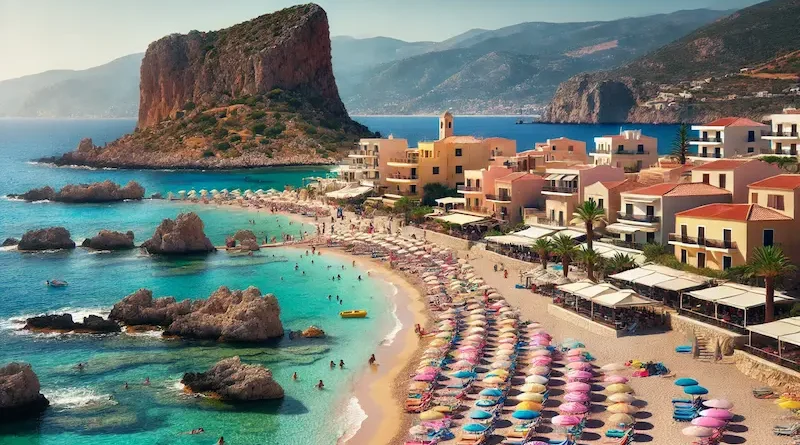Blind Beach, Italy by Marilena Carulli: A Refreshing Haven for All
Introduction
Traveling should be a pleasure for everyone, yet for individuals with visual impairments, accessibility can be challenging. Marilena Carulli, a passionate advocate for inclusivity, recognized this and transformed an Italian beach experience into something truly special: a beach designed to welcome the visually impaired. Her innovative efforts have not only created an inclusive space but also helped raise awareness about the need for accessible leisure options.
In this blog post, we’ll take a closer look at the Blind Beach concept, explore how Carulli’s vision has impacted tourism, and uncover what makes this beach so unique.
Understanding the Concept of the Blind Beach
Located along Italy’s beautiful coastline, the Blind Beach isn’t just any ordinary seaside destination. Carulli’s concept took shape with the idea that people with visual impairments could enjoy a beach experience independently, safely, and with the support of specialized facilities. This approach extends beyond mere physical accessibility to encourage a feeling of community and freedom.
The beach includes elements like tactile paths, specific auditory cues, and strategically positioned ropes that help visually impaired visitors navigate with ease. Additionally, trained staff are available to provide support if needed, but the layout is intentionally designed to allow people as much independence as possible.
What Sets Blind Beach Apart?
1. Thoughtful Design for Independence
Every detail of the beach layout has been designed with independence in mind. Paths are fitted with textured surfaces, allowing visitors to feel the changes beneath their feet and understand their direction. Ropes line walkways and resting areas, providing tactile guidance that visitors can follow intuitively. This thoughtful setup allows individuals to move confidently, enhancing the overall experience of freedom.
2. Access to Audio Guides
Instead of visual signs, audio guides play a major role here. Information about safety guidelines, beach services, and surroundings is relayed through audio formats, making it easy for visitors to stay informed without needing sighted assistance. Carulli’s approach to integrating technology in the form of audio guides has proven beneficial for ensuring guests feel comfortable and aware of their surroundings.
3. Staff Trained in Accessibility
Carulli’s beach staff is specially trained to support individuals with disabilities. More than just lifeguards or attendants, these team members understand how to guide, inform, and offer assistance tailored to each visitor’s needs. Staff members offer guidance, ensuring each person has the help they need but also respects their autonomy and comfort.
The Positive Impact of Blind Beach
The Blind Beach concept has sparked a meaningful shift in Italian tourism, emphasizing the importance of inclusive spaces. Accessibility in leisure spaces like beaches had long been a missing piece in Italy’s tourism landscape, especially for visually impaired travelers.
Marilena Carulli’s initiative has not only set an example but has also paved the way for other destinations to consider accessibility. Her work has brought a sense of normalcy and ease to the beach-going experience for visually impaired individuals. It has also inspired various local governments and tourism boards across Italy to focus more on making public spaces inclusive.
Enjoying Blind Beach: What to Expect
For those planning a visit to the Blind Beach, here’s a simple breakdown of what you can expect:
- Accessible Entry and Parking: The beach has designated areas for accessible parking, making it easy for visitors arriving by car to reach the main entrance.
- Guided Pathways and Sensory Cues: From the parking lot to the beach itself, all paths are fitted with textured surfaces and auditory cues, helping guests navigate independently.
- Roped Zones for Security: Key areas, like the shoreline and resting zones, have rope barriers that guide and safeguard guests, allowing them to explore with confidence.
- Comfortable Facilities: Restrooms, showers, and seating are all accessible, accommodating those who may need additional support or space.
- Friendly and Supportive Staff: Staff are there to help and offer guidance on amenities or nearby facilities, while ensuring that visitors feel empowered to enjoy the beach on their own terms.
Tips for Visiting Blind Beach
If you or someone you know is visually impaired and planning a visit, here are a few tips to help make the most of the experience:
- Plan Ahead: Reach out to the beach management if you need specific accommodations or guidance. The team is responsive and willing to help arrange any necessary details to make your visit smooth.
- Familiarize Yourself with the Layout: Once you arrive, take a moment to get used to the layout by walking along the tactile pathways and following the auditory cues. This initial walkthrough can be helpful in understanding the surroundings.
- Utilize Audio Guides: Make use of the audio guides available, as they provide important details about beach facilities and general information.
- Ask for Assistance When Needed: While the layout encourages independence, the staff is always available to assist. Don’t hesitate to ask for help if needed; they are trained to provide respectful and attentive support.
Why Accessibility Matters in Tourism
Blind Beach has shone a light on a significant aspect of travel: accessibility. Tourism is often tailored to able-bodied individuals, overlooking the needs of people with disabilities. This gap not only limits opportunities for the visually impaired but also deprives them of experiences many people take for granted.
The Blind Beach project serves as an excellent example of how small, thoughtful changes can lead to substantial impacts. By implementing tactile pathways, audio guides, and trained staff, Carulli has redefined what a beach can offer to those who are visually impaired. This approach reflects a growing trend towards inclusive travel, where the goal is not only to accommodate everyone but to celebrate diversity and accessibility as fundamental parts of the travel experience.
FAQ
Q1: Is Blind Beach open to everyone?
Yes, Blind Beach is open to all visitors, with special amenities designed to assist visually impaired guests.
Q2: How can I get more information on booking a visit?
For specific information, you may contact the beach management directly. They can provide details on accessible facilities, parking, and any other assistance you may need.
Q3: Are there any other beaches in Italy like Blind Beach?
Blind Beach is unique in its comprehensive accessibility design for visually impaired individuals. However, Carulli’s project has inspired other locations to begin exploring similar inclusive designs.
Conclusion
Blind Beach, with its dedicated focus on inclusivity, highlights the importance of accessible spaces for individuals of all abilities. Marilena Carulli’s work has brought a refreshing approach to Italy’s tourism scene, offering a beach experience that goes beyond the ordinary to make every visitor feel welcome.
For anyone planning a trip to Italy, Blind Beach offers a thoughtful and inclusive space where everyone can enjoy the seaside independently and safely. Whether you’re visually impaired or simply want to visit a place that embraces inclusivity, this beach promises a memorable experience built on care, respect, and freedom.
Visit the rest of the site Digital Magazine Time for more interesting and useful articles. Thank you!

